
Cooking the perfect chicken breast is a skill many home cooks aspire to have in their culinary toolbox. Chicken is versatile and affordable–and healthy, too. (Check out all 100 of our chicken breast recipes.) But chicken that’s dried out and tough? No, thank you!
To help make sure you get a moist and always-delicious chicken breast, avoid these seven kitchen mistakes.
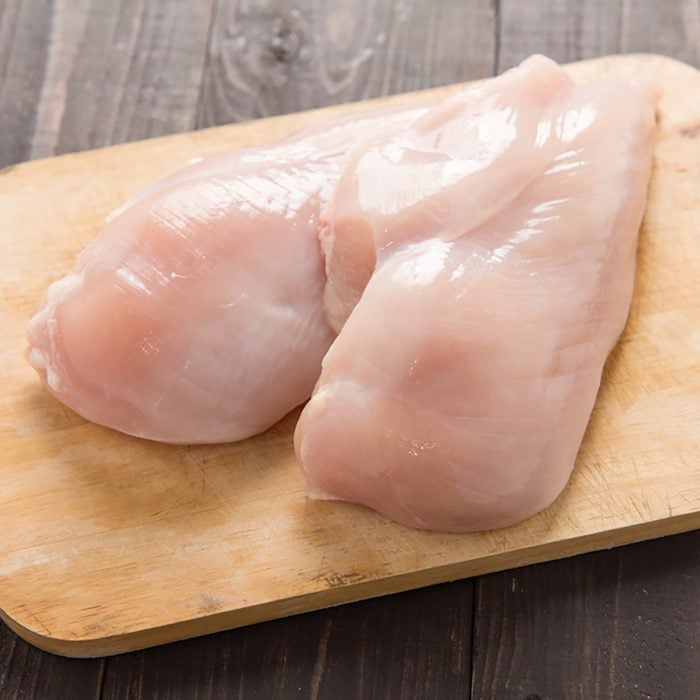
Mistake #1: Starting with skinless breasts
A lot of us go straight for the boneless, skinless fillets at the meat counter. It makes sense–they’re easy to work with, and we’ve all heard that the skin is unhealthy. But keeping the skin on while it’s cooking helps keep the chicken moist. (You can always take it off before you dig in.)
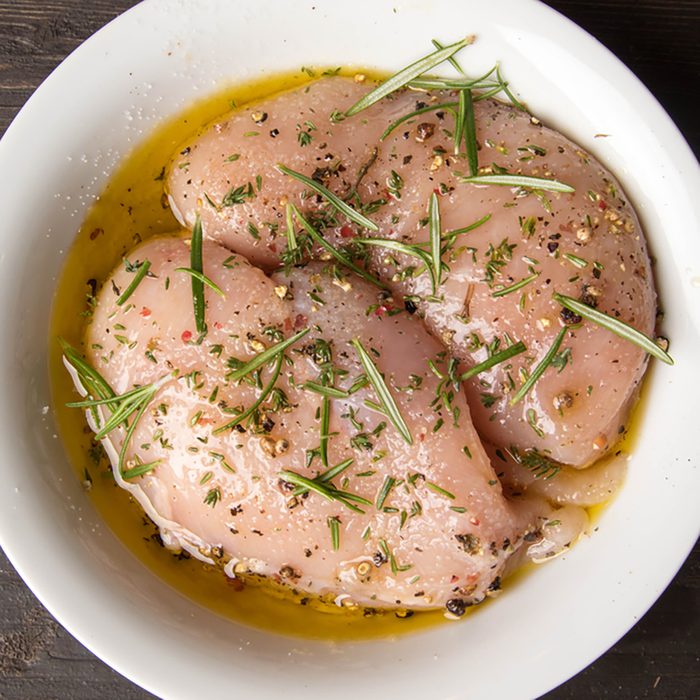
Mistake #2: Not marinating or brining the meat
Chicken breasts can be dry. After all, they’re not as fatty as other parts of the bird. But a marinade, brine or rub goes a long way in adding flavor to the meat and keeping it moist. If you’re going for simple, that’s OK–a basic salt and pepper rub is just fine.
Want to get a little creative? Try a Grilled Basil Chicken or this not-so-basic Paprika Dry Rub recipe.
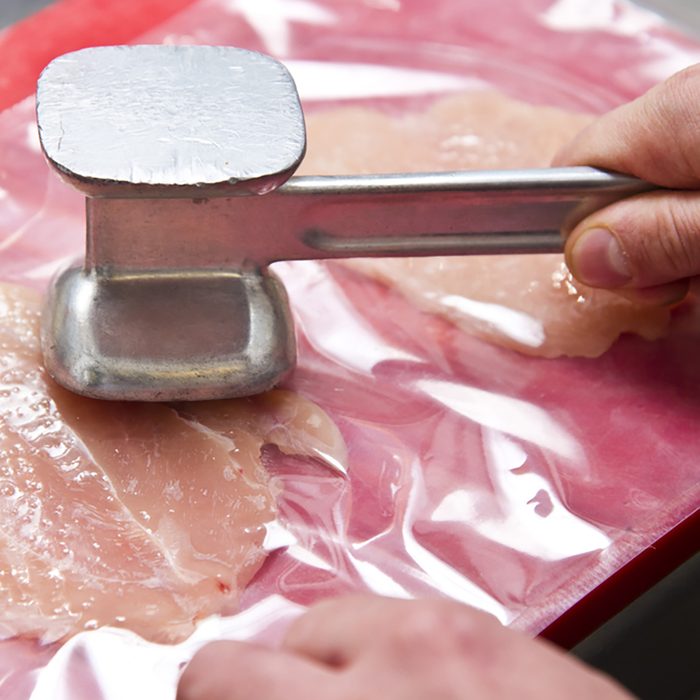
Mistake #3: Not pounding out the meat
Pounding chicken breasts helps tenderize the meat. With your strength (and the force of a trusty meat tenderizer), you start to break down the proteins in the meat. Plus, with thinner breasts, you reduce the amount of time it takes to cook the breasts all the way through. This is helpful because we often end up overcooking it!
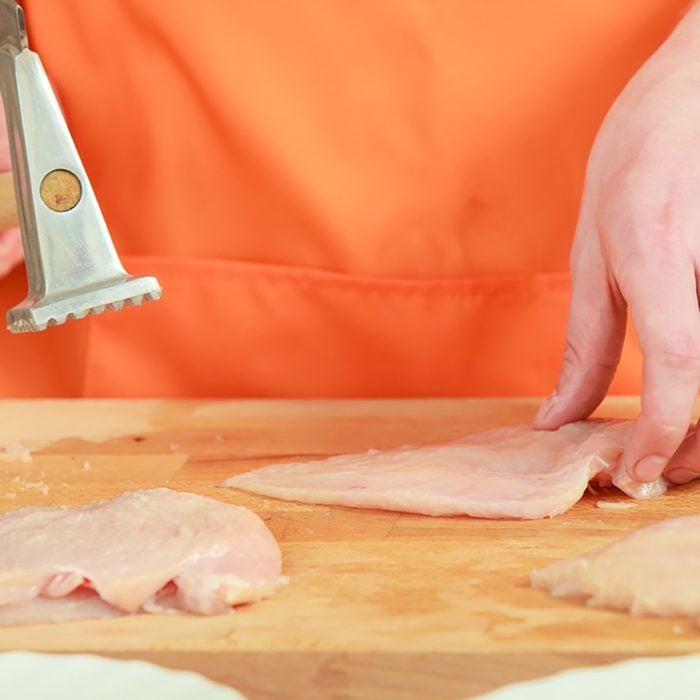
Mistake #4: Not pounding the breasts out to an even thickness
If you’re cooking more than one chicken breast, you’ll benefit from making sure the breasts are all the same thickness. If they’re not, you’ll likely have a hard time getting them all to the proper internal temperature (165° F) without drying out a few.
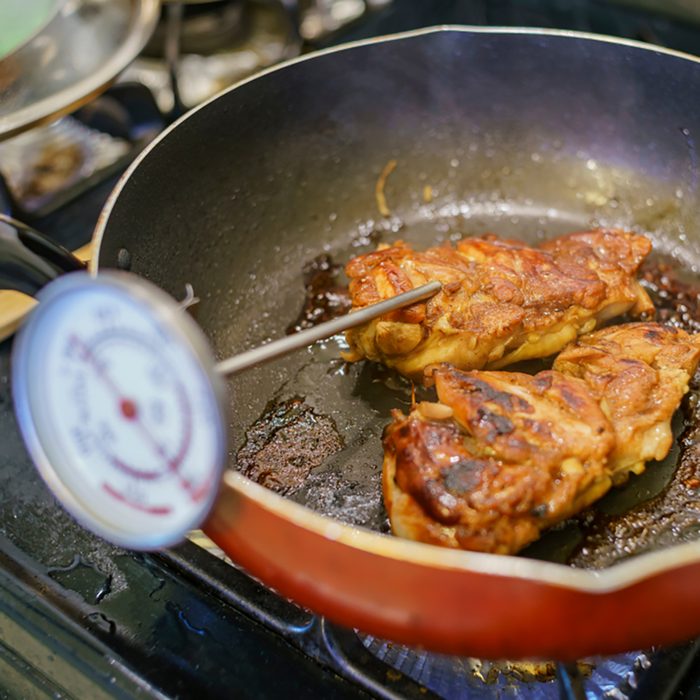
Mistake #5: Cooking chicken for too long
Nobody likes a medium-rare chicken breast–or salmonella. But an overcooked chicken breast is tough and unpleasant to eat. Recipes offer good guidelines for cooking, but until you’ve practiced enough, it can be hard to know when you’ve cooked the chicken through.
Let a meat thermometer help. Lots of cooks advise cooking chicken until it reaches an internal temperature of 160° F, assured that it will rise to 165° while it rests.
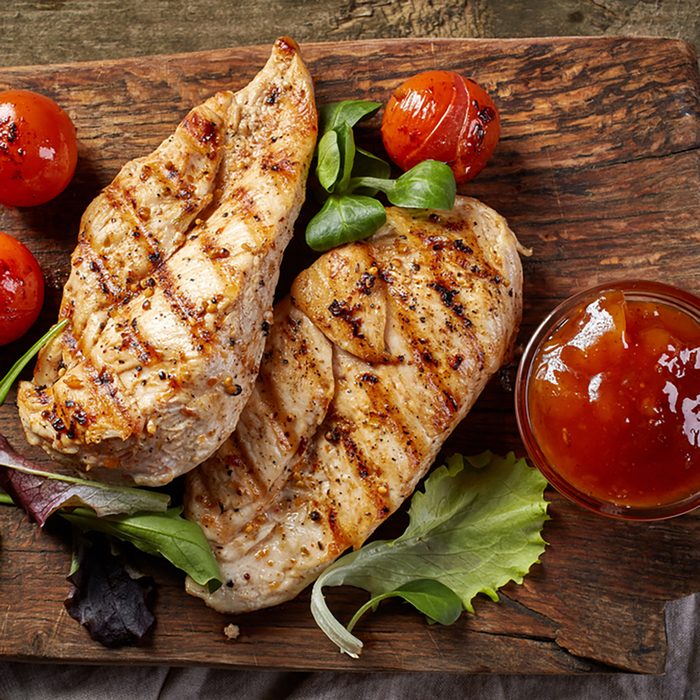
Mistake #6: Not letting the meat rest
If you’ve ever pulled a piece of meat out of the oven or off the grill and cut into it right away, you’ve probably noticed the juices running onto your plate. That is juicy goodness that you’d probably rather savor in the meat! So, tent some foil over your chicken after it cooks and let it rest on the countertop for 10 minutes before serving.

Mistake #7: Not adding a sauce
Nothing beats a perfectly cooked piece of chicken. But if it’s not quite perfect, you can help disguise some of that dryness with a delicious sauce. A yummy sauce is a great way to add flavor, too, of course. Steal an idea from one of our favorite chicken dinners.
(Pressed for time? You’ll want our 30-minute chicken recipes.)
